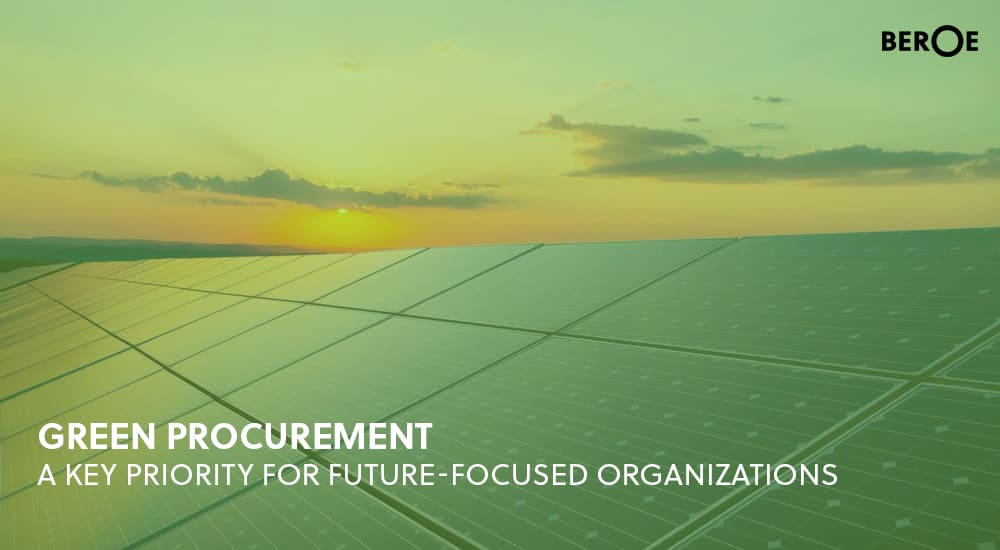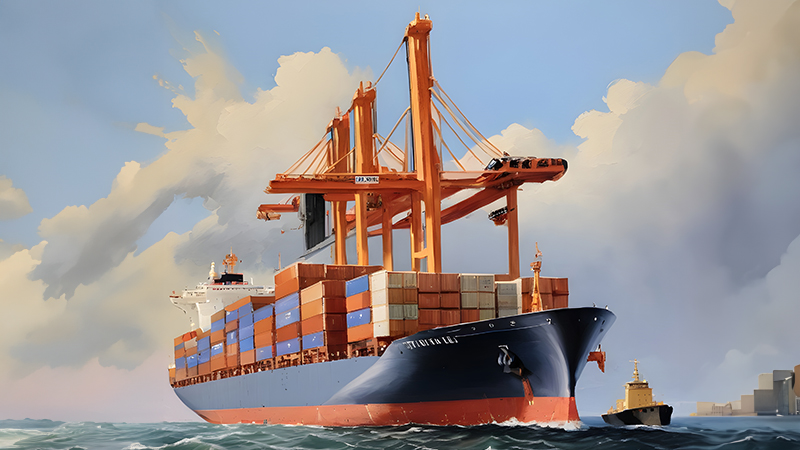
Green procurement: a key priority for future-focused organizations


Rapid industrialization and growing environmental activism are causing procurement organizations across industries to sit up and take notice of how their actions affect the environment, including human lives. In the last few years Coca-Cola, McDonalds and Tween Brands Inc. are just a few names that have made headlines thanks to the presence of a cancer-causing metal known as cadmium in some of their products targeting children. While Tween Brands Inc. had to recall over 137,000 products involving 19 different styles of children's metal necklaces, bracelets and earrings, McDonalds and Coca-Cola had to recall 12 million and 88,000 themed drinking glass respectively. In this age of consumer activism, it has become critical for ethically and environmentally conscious organizations to rely on their procurement teams to source materials and products that adhere to green procurement policies.
What’s driving the adoption of green procurement?
A Green or Sustainable procurement policy takes into account human health and environmental concerns while sourcing products and services from suppliers across the globe. Organizations are recognizing the valuable benefits that stem from incorporating green procurement strategies both within the organization at the corporate social responsibility (CSR) level, as well as across engagements with their suppliers. Such organizations are turning to green procurement to help them:
Minimize supply chain risks
A 2016 survey conducted by Ethical Corporation titled “Ethical Corporation State of Sustainable Supply Chains Report” identified eliminating supply chain risks (34 percent of respondents) as the main driver behind adopting sustainable procurement strategies[1]. For consumer companies, these risks could be associated with the sustainability impact of providing goods and services to customers. KPMG recently published an article which states that “the typical consumer company’s supply chain creates far greater social and environmental costs than its own operations, accounting for more than 80 percent of greenhouse-gas emissions and more than 90 percent of the impact on air, land, water, biodiversity, and geological resources.” In 1992, IKEA found its brand image take a beating when it faced a formaldehyde-related crisis in Germany, its biggest market. Tests conducted on one of its most popular products – the Billy bookshelf – revealed that formaldehyde emissions were slightly higher than the permitted value. The subsequent retraction of the product resulted in IKEA and its suppliers losing millions of dollars, and the incident was partially responsible for IKEA’s decision to pay closer attention to the environmental impact. Today, IKEA is one of the world’s most vocal champions for sustainable business practices and works closely with its suppliers to ensure energy efficiency, responsible souring and ethical labour practices.
Achieve cost savings
Besides reducing risk, cost savings is another key business driver for adopting sustainable procurement. In 2015, CDP collected information from 4,005 global suppliers and published its findings in a report titled ‘From Agreement to Action: Mobilizing suppliers toward a climate resilient world’[2]. The report, written on behalf of 75 organizations with over $2 trillion of procurement spend, revealed that suppliers who disclosed their climate information reported combined savings of $6.6 billion. The report also indicated that the savings increased with time —suppliers who had been consistently sharing information for three years reported an average savings of $1.5 million per emissions reductions initiative, versus first-time reporters who had an average savings of $900 thousand per initiative. More than cost savings, green procurement strategies can help procurement organizations tackle changing regulatory environment.
Adhere to current and future regulatory requirements
On December 2015, 197 countries entered into the first-ever universal and legally binding global climate deal now known as the Paris Agreement. The primary objective is “to strengthen the global response to the threat of climate change by keeping a global temperature rise this century well below 2 degrees Celsius above pre-industrial levels and to pursue efforts to limit the temperature increase even further to 1.5 degrees Celsius”[3]. With this goal in mind, governments across the world will have to develop frameworks and laws to reduce harmful emissions. Needless to say, these new regulations will have a significant impact on global supply chains. According to GreenBiz, a website that focusses on sustainability, Bank of America conducted an exercise to understand “the annual cost impacts on the company should the U.S. federal government pass a carbon tax. When the bank alone was considered, it estimated the cost would be between $13 million and $26 million — but when the bank's complex supply chain costs were factored in, it estimated that potential additional costs could reach between $180 million and $500 million”[4].
The world is hurtling towards acute water scarcity. The freshwater resources are fast depleting at a time when water demand is going up. Global demand for freshwater is expected to be 40 percent above the available resources by 2030. Water scarcity will begin to affect many industries, especially the ones which are operating out of water-stressed regions.
It is not easy to map out the water footprint across the supply chain as it is difficult to have visibility all through Tier 2 and Tier 3 suppliers. However, it is important to go ahead and do it as it would deliver not just cost savings but also gear up companies for potential water-related regulations that can come up in the future. These regulations can be similar to conflict diamond, conflict mineral and sustainable palm oil campaigns. A future-focused procurement organization will eventually plan for such contingencies.
Steps are also being taken to introduce globally supported sustainability standards in the context of supply chain management. For instance, a new ISO standard, ISO 20400, will be introduced in 2017 to provide organizations with clear guidelines on how to implement and measure sustainable procurement practices[5].
The right intelligence partner can help procurement teams give the green light to sustainable practices
While many global procurement teams have recognized the benefits of adopting sustainable procurement practices, they still face an uphill challenge when it comes to designing and executing these programs. An intelligence partner with expertise in consulting for supply chain management can help procurement organizations by taking complete ownership of their sustainability needs.
It’s essential that the right partner is able to take a long-term view of an organization’s green procurement objectives and offer an engagement that can help them set up procedures, gather intelligence, and provide visibility to stakeholders to facilitate green procurement practices in supply chain management. This is because green procurement practices continuously require relevant market intelligence as well as in-depth analysis of supplier capabilities for organizations to:
- Measure environmental consequences of sourced and finished products during various stages of their lifecycle
- Benchmark carbon footprints of supplies and products
- Identify and develop organizational green procurement policies adhering to green specifications and sustainable needs
- Gain visibility of and evaluate supplier exposure to carbon risk
- Perform a sustainability assessment of suppliers and use the insights to work with procurement stakeholders and suppliers to identify gaps and mitigation strategies
According to the 2016 survey conducted by Ethical Corporation, the number one supply chain opportunity in 2016 and 2017 is ‘industry collaboration’, which was identified by one in five of respondents as the biggest opportunity for their organization. The ideal procurement intelligence provider should have a peer network of sourcing managers, category heads, suppliers, industry experts and other relevant professionals to enable this collaboration and information sharing.
Today, procurement professionals have the critical responsibility of defining green procurement strategies that govern the economic, environmental, and social factors of every procurement-related decision. The careful evaluation of these factors has the ability to give organizations a set of competitive differentiators as well as opportunities to save costs and align ethically with the interests and concerns of consumers.
Related Insights:
View All
Get more stories like this
Subscirbe for more news,updates and insights from Beroe







